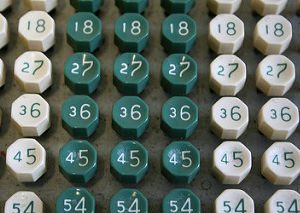Hidden Figures was a bestseller and turned into an acclaimed movie, and deservedly so. It's about the African American female mathematicians who were instrumental in getting the United States to the moon, despite being disrespected by their superiors and then ignored by history. Unfortunately, Anonymous was a woman, and they were not the only women to be taken for granted and then kicked to the curb, even in the 20th century. Here are some more STEM women and what they accomplished.
African American women also worked as codebreakers in World War II. While not a lot of time is spent on them in Liza Mundy's Code Girls, the story as a whole is fascinating. With men away at war, the United States military needed codebreakers in a bad way. Smart women were recruited, first from the Seven Sisters women's colleges in the Northeast and then across the country, to break Axis codes and encrypt Allied ones, laying the groundwork for the NSA. It was their patriotic duty not to talk about it, ever, and Mundy often has to rely on recently declassified NSA records because of it. Compelling, and full illustrative mini-biographies, this is an engaging look at some of the greatest of the Greatest Generation.
The Woman Who Smashed Codes by Jason Fagone is a biography of one of the women profiled in Code Girls. Elizebeth Friedman first went to the Newberry Library to see its copy of Shakespeare's First Folio, and got introduced to an eccentric millionaire who wanted to prove it was all code and that the author was actually someone else. Elizebeth met her husband working on this project, and together they broke rumrunner codes for the Coast Guard and later, several Enigma machine codes during the Second World War. Elizebeth was rather self-effacing and her husband needed little encouragement to take the credit, but mostly, she was responsible for the breakthroughs. An engaging portrait of one of the great cryptologists.
Back to NASA. Mary Sherman Morgan only had a high school diploma and was the sole female analyst at North American Aviation, but she was enough of a chemistry whiz to cook up hydyne, a rocket propellant. Former Nazi Werner Von Braun got a great deal of the credit for her work, partly because she was so private and partly because what she was working on was so secret. Of course, Von Braun's ego had a hand in her anonymity, too. Playwright George Morgan wrote the biography Rocket Girl as a tribute to his talented mother, and the affection is obvious.
Of course, Mary Morgan wouldn't have been able to do what she did if not for the women of The Glass Universe. Famed science writer Dava Sobel writes of the female "computers" who analyzed photographs of stars taken at Harvard Observatory. Originally mostly college-educated women, these astronomers (whether they had the official credentials or not) figured out distances between and the brightness of stars, among other things. Sobel gives us enough science to make her story coherent, but manages to keep it flowing.
Have more stories of unsung women in STEM? Let us know in the comments.



Add a comment to: Math Is for Girls: What to Read If You Like Hidden Figures